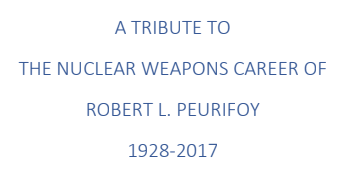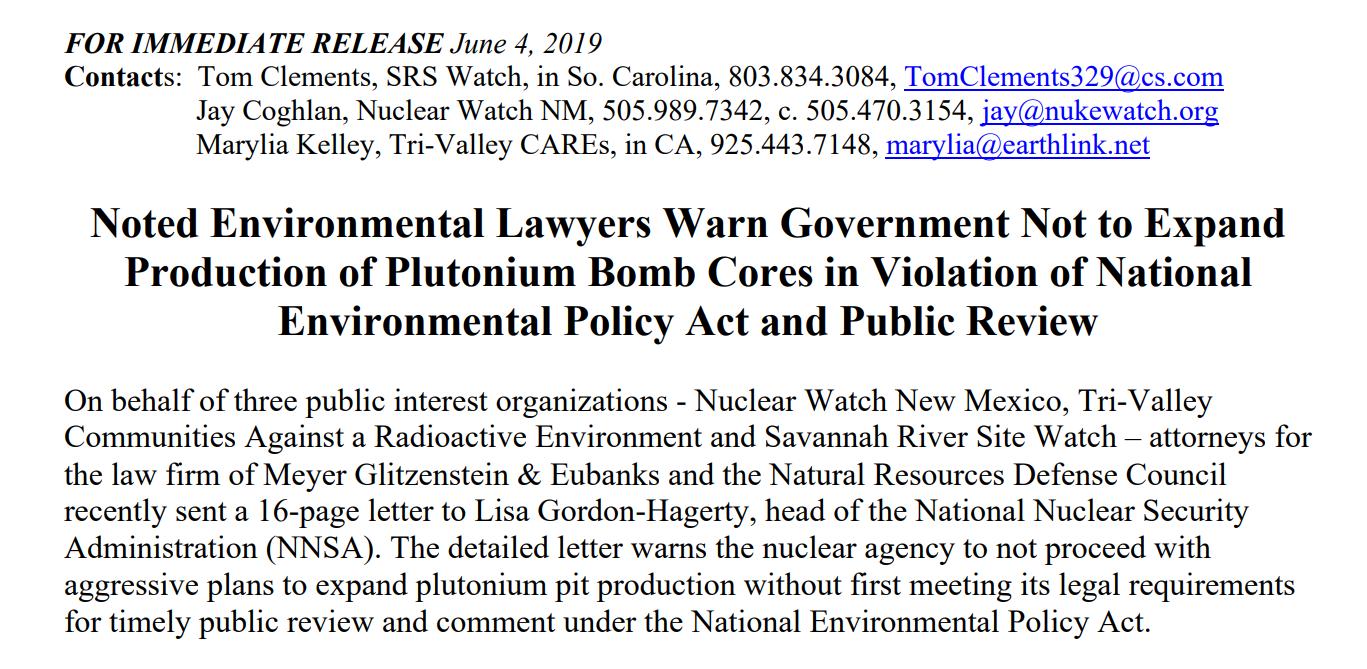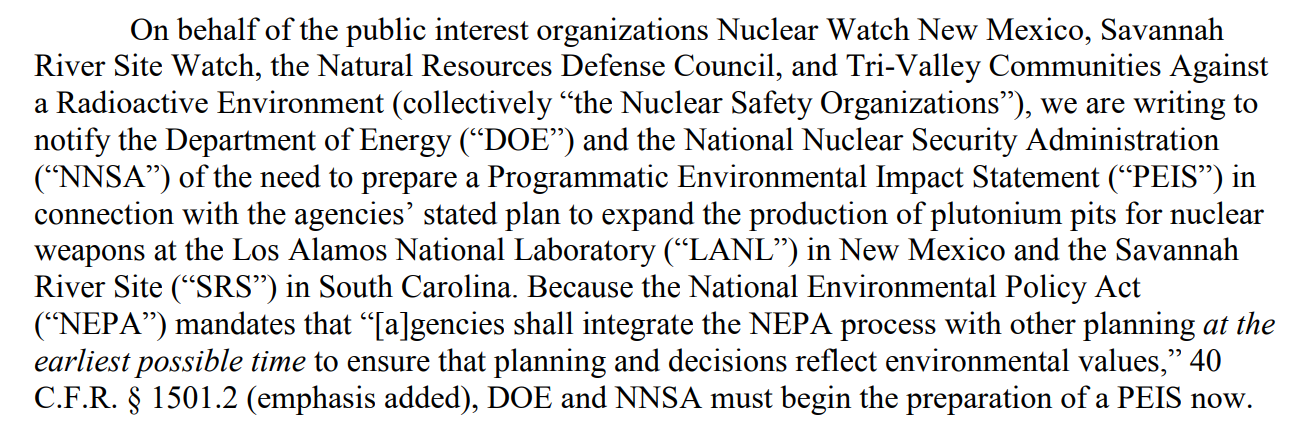2020
Nothing Found
It seems we can’t find what you’re looking for. Perhaps searching can help.
2019
Bob Peurifoy worked at the Sandia Labs for 39 years, serving as director of nuclear weapon development and retiring as a vice president. He was the driving force behind many safety improvements to U.S. nuclear weapons and a strong believer in conservative maintenance of the stockpile. Bob was also a strong critic of aggressive Life Extension Programs that further diverged the stockpile from its tested pedigree and wasted taxpayers’ money. As Bob’s friend and colleague Gordon Moe puts it, “Bob’s family and I hope that Bob’s wisdom and reason as reflected in the Tribute will continue to benefit humanity for many more years through its use as a reference by researchers in the field of nuclear weaponry.”
VIEW FULL TRIBUTE – PDF
Nation’s most ambitious project to clean up nuclear weapons waste has stalled at Hanford
The Energy Department’s most environmentally important and technically ambitious project to clean up Cold War nuclear weapons waste has stalled, putting at jeopardy an already long-delayed effort to protect the Columbia River in central Washington.
BY RALPH VARTABEDIAN | latimes.com
Entry sign at Hanford Site, Washington.Photograph taken by Tobin Fricke – January 2005.
In a terse letter last week, state officials said the environmental project is at risk of violating key federal court orders that established deadlines after past ones were repeatedly missed.
Two multibillion-dollar industrial facilities intended to turn highly radioactive sludge into solid glass at the Hanford nuclear site have been essentially mothballed. Construction was halted in 2012 because of design flaws and Energy Department managers have foundered in finding alternatives, according to the letter that threatens new litigation.
The department has stored 56 million gallons of radioactive sludge left over from the production of plutonium in 177 leaky underground tanks on a desert plateau a few miles from the Columbia River, raising concerns that the material has migrated into groundwater and eventually will reach the largest river in the West.
 Listen to the latest episode of Ploughshares Fund’s new podcast, Press the Button, featuring Eric Schlosser, filmmaker and author of several publications, including Command and Control. This is a particularly powerful episode to share. Eric is clear and compelling about the inherent risks of our deterrence strategy, the fallibility of the US nuclear command and control and the horrors from the use of just one nuclear weapon. He is one of the most compelling advocates on our issues in the country today. It’s worth a listen!
Listen to the latest episode of Ploughshares Fund’s new podcast, Press the Button, featuring Eric Schlosser, filmmaker and author of several publications, including Command and Control. This is a particularly powerful episode to share. Eric is clear and compelling about the inherent risks of our deterrence strategy, the fallibility of the US nuclear command and control and the horrors from the use of just one nuclear weapon. He is one of the most compelling advocates on our issues in the country today. It’s worth a listen!
You can listen here: https://www.ploughshares.org/pressthebutton
Or – Listen and subscribe on iTunes · Spotify · SoundCloud · Google Play
HASC Panel’s Bill Could Slow-Roll NNSA’s Planned S.C. Pit Plant
The Department of Energy would no longer have to make 80 plutonium pits a year by the end of the next decade, if legislation unveiled Monday in the Democrat-controlled House becomes law.
EXCHANGE MONITOR | June 4, 2019
The legislation, due for a vote Tuesday by House Armed Services strategic forces subcommittee “would repeal the requirement for the Secretary of Energy to demonstrate the capability to produce war reserve plutonium pits at a rate sufficient to produce 80 pits per year by 2027,” according to the subcommittee’s portion of the 2020 National Defense Authorization Act (NDAA).
The NDAA is the annual policy bill that sets funding limits for defense programs including those managed by the DOE’s National Nuclear Security Administration (NNSA). The full House Armed Services Committee is set to vote on the entire House NDAA on June 12.
New, More Usable Nukes for Trump? No.
Congress should use the new defense authorization bill to bar the deployment of new, dangerous, and redundant nuclear weapons.
REP. TED W. LIEU D-CALIFORNIA & SEN. EDWARD J. MARKEY D-MASSACHUSETTS | defenseone.com
U.S. NAVY / MASS COMMUNICATION SPECIALIST 1ST CLASS JAMES KIMBER |The Ohio-class ballistic missile submarine USS Tennessee (SSBN 734) returns to Naval Submarine Base Kings Bay.
The United States has the world’s most powerful military ever. It spends more on defense than the next seven countries combined and has developed many of the most destructive conventional weapons ever created to ensure that America can address any threat. Congress consistently authorizes investments in innovative technology and weaponry to protect our country and our allies. We also possess a strong nuclear deterrent.
These are insanely destructive weapons with an unparalleled ability to kill and destroy, both instantly and for years afterward from the nuclear fallout. Nuclear weapons should never, ever be used first and new nuclear weapons must not be designed to be more usable.
Yet last year, the Trump Administration came to Congress with just such a request to develop a new “low-yield” nuclear warhead for our submarine-launched ballistic missile, the Trident D5. Congress foolishly authorized the development of this warhead on a party-line vote, but there is still time to correct course.
Letter on Need for a Programmatic EIS for Expanded Plutonium Pit Production
Could Trump Trash The Nuclear Test Ban Treaty?
Think of what the world would be like if Russia, the United States, China, India and Pakistan were testing nuclear weapons.
BY MICHAEL KREPON | forbes.com
They are not because of the Comprehensive Test Ban Treaty (CTBT) which is responsible for shutting down nuclear testing by major and regional powers for more than two decades. Walking away from the CTBT would be extraordinarily dumb and dangerous, but the Trump administration has taken a step in this direction.
The CTBT was negotiated in 1996, but it isn’t solidly in place. While Russia has signed and ratified it, Senate Republicans rejected it in 1999. China, like the United States, has signed but not ratified. There are other holdouts, including India and Pakistan. And yet none of these states has tested nuclear weapons since 1998. When a treaty is negotiated, it’s common diplomatic practice not to undercut its objectives while awaiting its entry into force. Hence the two-decades-long moratorium on testing by every nuclear-armed state except North Korea.
2018
Nothing Found
It seems we can’t find what you’re looking for. Perhaps searching can help.
2017
Nothing Found
It seems we can’t find what you’re looking for. Perhaps searching can help.
2016
Nothing Found
It seems we can’t find what you’re looking for. Perhaps searching can help.
2015
Nothing Found
It seems we can’t find what you’re looking for. Perhaps searching can help.




